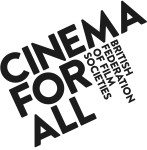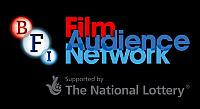 In 1945 The Wicked Lady, a melodrama directed by Leslie Arliss, about an eighteenth-century nobleman’s wife who secretly becomes a highway woman just for the excitement, was released in Britain. Supposedly based on true events in the life of Lady Kathleen Ferrers along the London – Birmingham road, it had one of the top audiences ever, 18.4m, for a film of its period.
In 1945 The Wicked Lady, a melodrama directed by Leslie Arliss, about an eighteenth-century nobleman’s wife who secretly becomes a highway woman just for the excitement, was released in Britain. Supposedly based on true events in the life of Lady Kathleen Ferrers along the London – Birmingham road, it had one of the top audiences ever, 18.4m, for a film of its period.
Probably mostly forgotten today, despite the late Michael Winner’s star-studded 1983 remake, it was one of a series of raunchy bodice-rippers, known collectively as the ‘Gainsborough Gothics’, from the British film studio Gainsborough Pictures.
It starred James Mason, Margaret Lockwood and Patricia Roc and,when released in America, it made a surprising but significant impact; not for its acting or directing qualities – but its cleavage.
The film attracted the attention of the Motion Picture Production Code Administration, also known as the Hays Code. A voluntary movie censorship (to forestall a federal organisation) introduced in 1930 by the US Postmaster General Will Hays, its mission was to spell out what was and wasn’t acceptable to show on screen. It later became the Motion Picture Association of America and is
still active in rating films in the USA.
The censors demanded changes when The Wicked Lady, with its revealing costumes, arrived in America, but coyly resorted to a geological term as a euphemism for this bit of anatomy. In fact, in 1946, Time magazine used the word when it reported:
Low-cut Restoration costumes worn by the Misses Lockwood and Roc displayed too much ‘cleavage’. The British, who have always considered bare legs more sexy than half-bare breasts, are resentfully re-shooting several costly scenes.
Previously called décolletage, a new usage came into being – but this wasn’t the first time that cleavage became an issue with American censors.
 In 1943 Howard Hughes launched Jane Russell’s career with a western. The Outlaw, an unlikely tale of the fictional relationship between Doc Holiday and Billy the Kid and their feud over a beautiful woman named Rio, played by Jane Russell, had upset American sensibilities. The film was considered too racy and was censored across the USA.
In 1943 Howard Hughes launched Jane Russell’s career with a western. The Outlaw, an unlikely tale of the fictional relationship between Doc Holiday and Billy the Kid and their feud over a beautiful woman named Rio, played by Jane Russell, had upset American sensibilities. The film was considered too racy and was censored across the USA.
However, Hughes – allegedly obsessed with Russell’s beauty (and cleavage) – hired a lawyer who successfully appealed to the courts on grounds that children could see naked men and women in classical paintings in public collections, yet “… the fact that Howard has exposed a few inches of Mrs Russell’s bosom is somehow pornographic”.
The judge apologised to the jury members for wasting their time and dismissed the case.
This argument was not unprecedented though – in the nineteenth century Zola had defended the juxtaposition of clothed men and a naked woman in Manet’s Le déjeuner sur l’herbe on classical precedence.
At no point does it appear that the censors were challenging the objectification of women. Rather, their concern was with how far they could be objectified – what could be seen on screen without upsetting audiences’ sensibilities.
 In Britain and for English-language films generally, the way films are censored tells us much about changing values of the nation in attitudes to sex, violence and rebellion. For British censors, post-WWII concerns about social unrest predominated. The Wild One (1953), about a motorbike gang terrorising a small town in the US, was banned for fourteen years in the UK for fear of what it could lead to here. Brando was seen as ‘attractive, admirable, imitable’ –
In Britain and for English-language films generally, the way films are censored tells us much about changing values of the nation in attitudes to sex, violence and rebellion. For British censors, post-WWII concerns about social unrest predominated. The Wild One (1953), about a motorbike gang terrorising a small town in the US, was banned for fourteen years in the UK for fear of what it could lead to here. Brando was seen as ‘attractive, admirable, imitable’ –
“What are you rebelling against Johnny?”
“What have you got?”
Now it’s a PG.
During the 1960s and ‘70s nudity was the problem, epitomised by the male nude wrestling in Ken Russell’s Women in Love (1969) and the supposed fine line between horseplay and homoeroticism. A compromise was reached with the censors who agreed to ‘darkened’ shots of full length frontal male nudity. In the 1980s it was violence. The non-stop gunfire of Rambo III (1988), made just after the Hungerford massacre, made it a potential political hot potato. After cuts, it was released as a certificate 18.
Accounts of the tussles between film-makers and censors abound and the trend – noticeable since The Outlaws until the present, and which makes what went before seem relatively mild compared with the content of some films now – is that we have become more permissible.
 What would 1940s audiences have made of the multiple f-words during the opening of Four Weddings …? How would A Clockwork Orange have been greeted with its fest of social unrest, sex and violence? And what about Ken Russell’s The Devils? – an outright attack on the Catholic Church played out with explicit … well, everything. Basic Instinct 2 anybody?
What would 1940s audiences have made of the multiple f-words during the opening of Four Weddings …? How would A Clockwork Orange have been greeted with its fest of social unrest, sex and violence? And what about Ken Russell’s The Devils? – an outright attack on the Catholic Church played out with explicit … well, everything. Basic Instinct 2 anybody?
Censorship is predicated upon films being potentially influential and that some film-goers should be protected from the messages that films may give – and that some people are capable of judging what others should see. The critic Mark Kermode certainly believes that horror film enthusiasts understand the material through knowledge of a history of genre texts (and, I suspect, the world) which makes any sense of arousal unlikely.
Do you think that the limits have been stretched too far? Or do you believe that cinema audiences should be treated as though they cannot interpret filmic images safely?
reh


